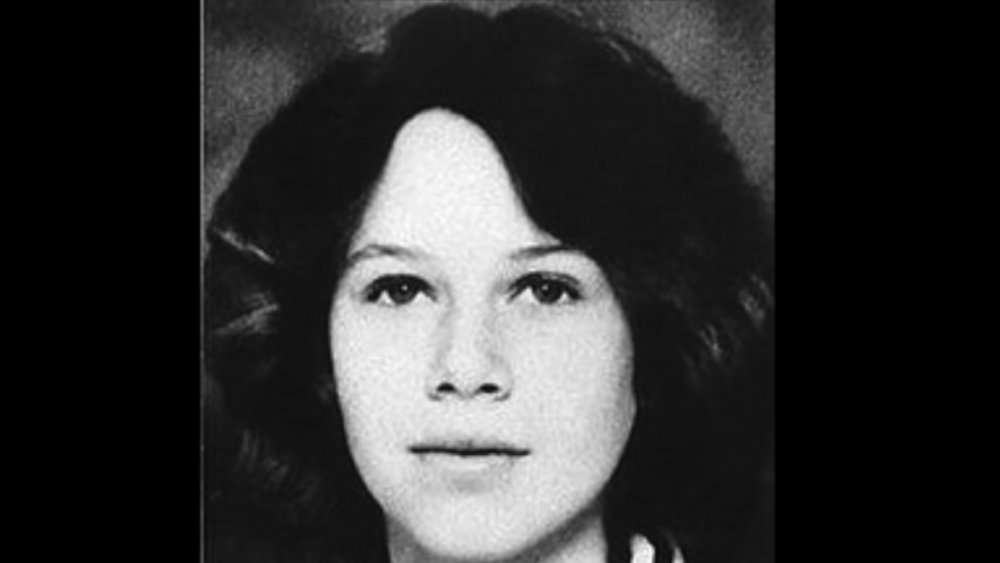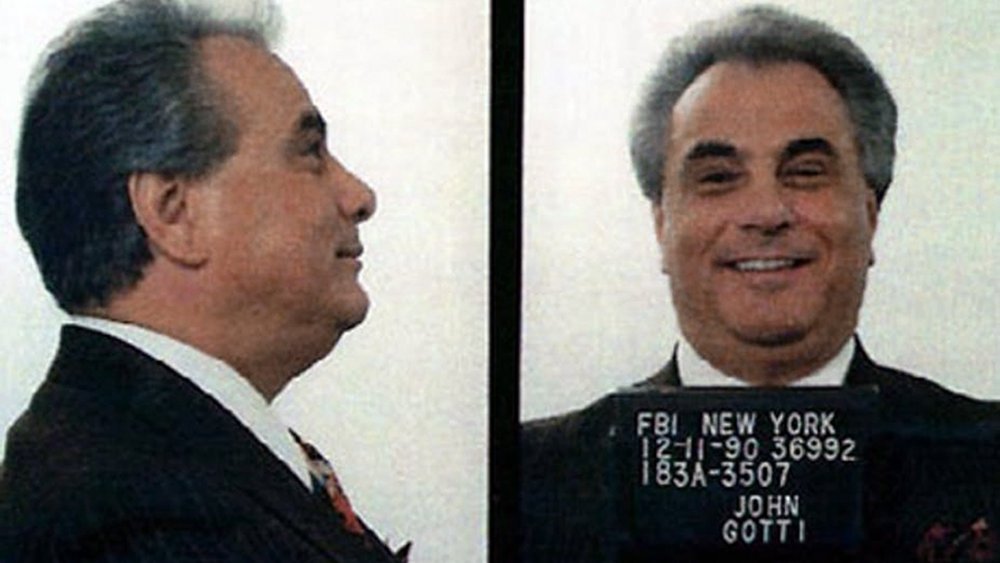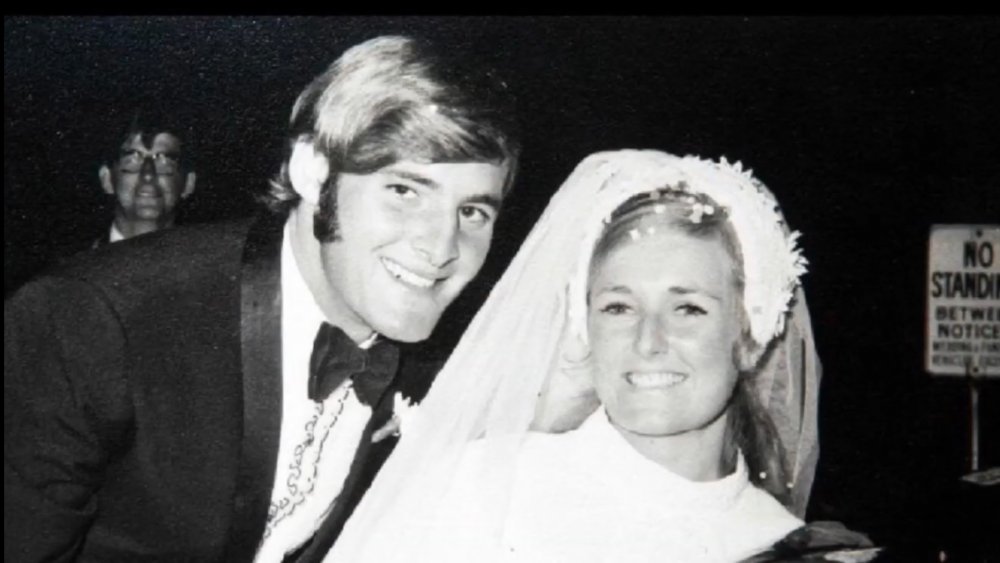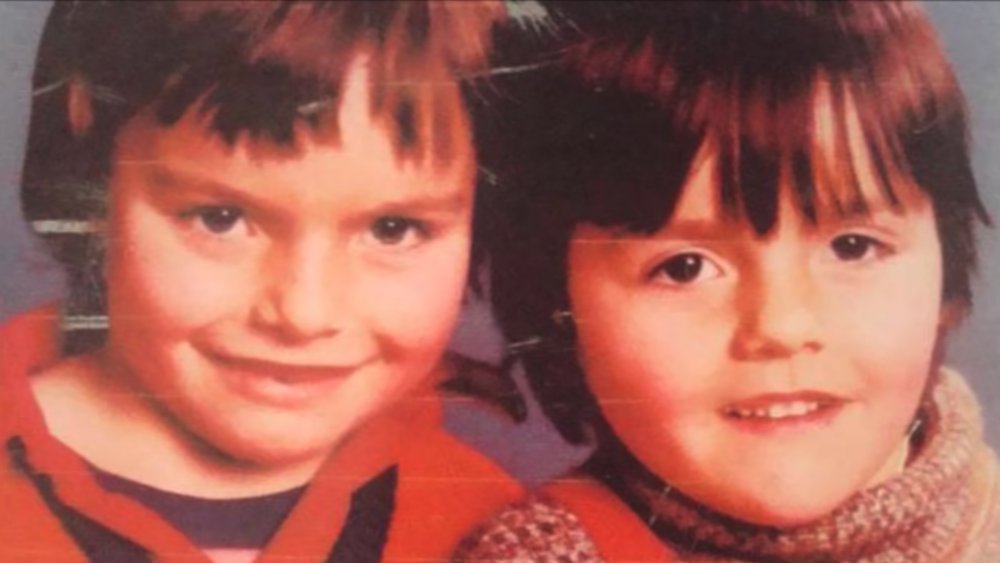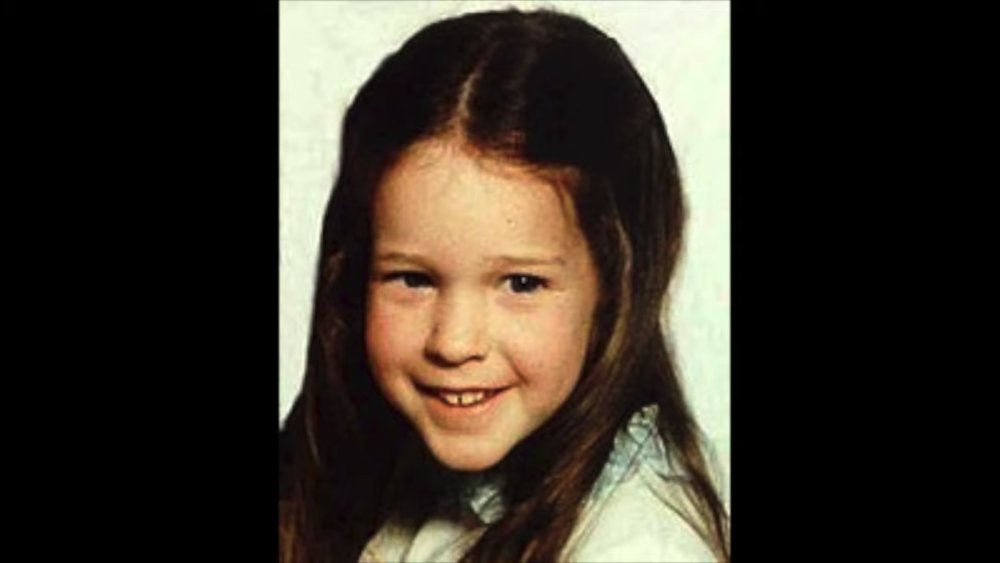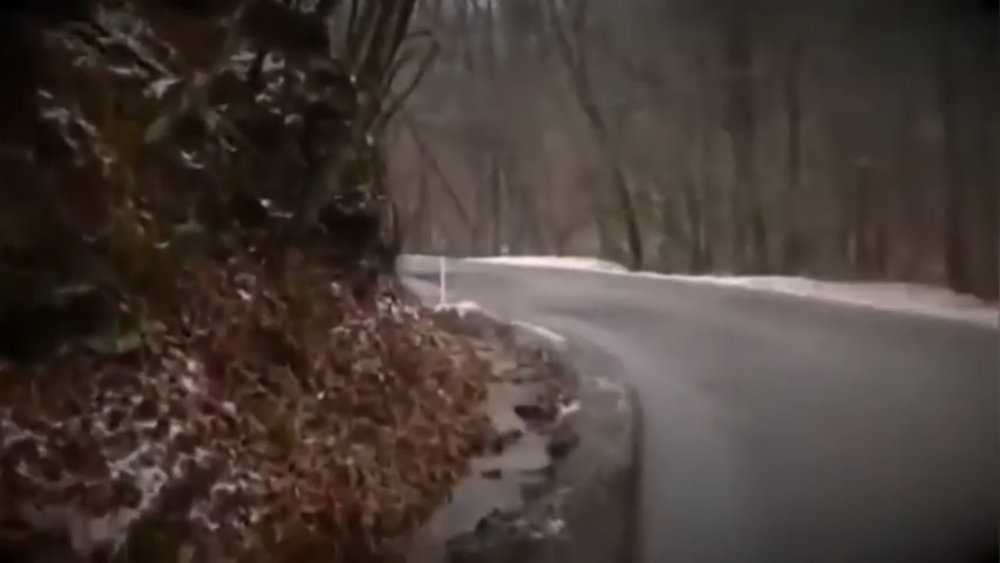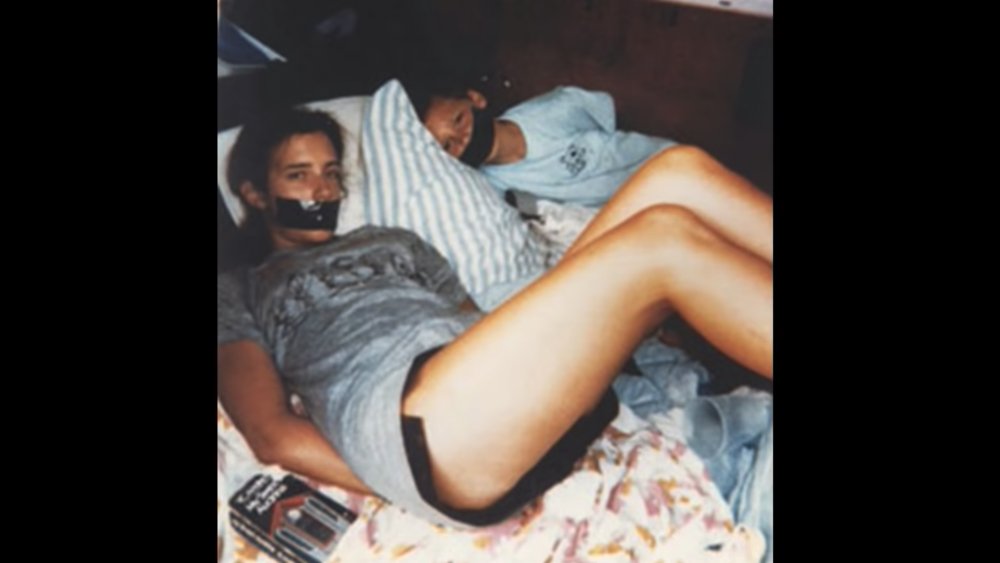Missing Persons Cases From The '80s That Shook The World
You may be old enough to remember a time when kids were allowed to go out and explore their neighborhoods, without cell phones or GPS units connecting them with their parents. Unfortunately, several high-profile disappearances in the 1980s caused some big changes in how people looked at the world as their children experienced it.
The Satanic Panic of the same era, while it ended up being a big hoax, also reflected a very real fear parents were beginning to develop around raising kids — there are people in the world who want to do children harm, and while they are rare, it doesn't necessarily hurt to be cautious.
It took a few more years, but eventually, the freedoms parents afforded to their children got more and more constrained. Today, adults are far more vigilant about things they used to let slide, and the stories that inspired these changes are heartbreaking.
Johnny Gosch was abducted on his paper route
12-year-old Johnny Gosch was conducting his paper route in West Des Moines, Iowa on September 5, 1982 when he was stuffed into a car by two men who quickly drove away, according to Owlcation. His family called the police, but at the time, law enforcement waited 72 hours before investigating missing children — which changed as a direct result of Johnny's case. Johnny was also one of the first children to have his face printed on the side of a milk carton.
Gosch has never been located, but a number of strange reports after his abduction seemed to indicate he was still alive, such as a boy spotted in a parking lot six months later screaming he was Johnny Gosch and had been kidnapped. The Gosch family also received a dollar bill reading "I am alive" and appeared to be signed by Johnny.
In 1997, Johnny's mother Noreen says an adult Johnny showed up at her apartment one night, according to The Charley Project. Noreen claims Johnny told her he was kidnapped by a pedophile ring but managed to escape. He had to remain hidden lest they come after him, and she's never seen him since. In 2006, Noreen Gosch found several old photographs left on her doorstep depicting multiple tied-up young boys. Noreen says one of the children in the photographs is Johnny, though this has never been confirmed.
Adam Walsh disappeared in a department store
On July 27, 1981, 6-year-old Adam Walsh and his mother, Revé, were in a Sears store in Hollywood Mall in California. Adam asked to watch some older boys play video games and his mother agreed, according to History. She continued shopping for 10 minutes, but when she returned, Adam was gone. Leaving a child unattended in a store is unthinkable now, but it wasn't at the time, and the reason it's unthinkable now is a direct result of Adam Walsh's high-profile disappearance.
Adam's partial remains were found two weeks later. These events sparked a number of big changes. Adam's father, John Walsh, started the National Center for Missing and Exploited Children (NCMEC), a non-profit that continues to help missing and abused children today. He later went on to host the legendary 90s true crime show America's Most Wanted, which helped catch hundreds of fugitives. In the early 2000s, a lockdown system called Code Adam was introduced in public places nationwide to respond to missing children, named after Adam Walsh.
Serial killer Ottis Toole, partner of Henry Lee Lucas, eventually claimed responsibility for Adam's abduction and murder while already in prison for his numerous other crimes. While they were unable to bring a case against him due to lack of evidence, law enforcement and the Walsh family are satisfied Toole was the perpetrator.
Laureen Rahn vanished from her apartment
With older children, missing persons cases tend to end up being runaways more often than abductions, but sometimes a case comes along where it's not clear exactly what happened. Laureen Rahn disappeared from her mother's apartment in Manchester, New Hampshire on April 27, 1980. While her mother spent the night out with her boyfriend, Rahn had two friends over, one male and one female, according to Manchester Ink Link.
At some point in the night, the three heard voices in the hallway. Thinking Laureen's mother was returning home, the male left and Laureen and her friend went to sleep. Laureen's mother came home to find a sleeping figure in her daughter's bed and naturally assumed it was Laureen. However, the figure was Laureen's friend, who had last seen Laureen when she went to sleep on the couch. The front door was unlocked, and the rear door was open. Also concerning was that every single light bulb in the apartment building's hallways had been unscrewed. Laureen couldn't be found anywhere.
Months later, Laureen's mother found mysterious phone calls charged to her account from California, one of which was to a hotline for teens with questions about sex. Laureen's mother, suspecting the calls were made by Laureen, hired an investigator who found the hotline was tied to a man called "Dr. Z," who was alleged to be a child pornographer, though he denied these claims when confronted.
John Favara had the worst possible neighbors
John Favara was a regular middle-class guy living in Queens with his family. But in 1980, Favara had a streak of bad luck ending with him disappearing entirely. Favara was neighbors with notorious gangster John Gotti, but never particularly interacted with him. One day, as Favara returned home from work, though, Gotti's son, Frank, pulled out in front of Favara's car on a minibike, leading to Favara accidentally striking and killing the 12-year-old boy with his car, according to the New York Daily News.
Gotti's family and associates, particularly his wife Victoria, began to directly blame Favara for Frank Gotti's accidental death. This campaign of harassment included spray painting the word "murderer" on his car and even violently confronting him at his home. Within a few months, Favara realized the abuse wouldn't stop, sold his home, and planned to move away. Just days before he could, though, John Favara disappeared without a trace.
Investigators found Favara was kidnapped outside of his place of work by unknown men, who pulled him into a van and drove away. While it was very clear what had happened, authorities were unable to bring charges against Gotti or anyone involved with him. John Favara was declared legally dead a few years later. His remains have never been found.
Lynette Dawson's disappearance seemed to have an obvious solution
If you've ever heard a true crime story, chances are you're familiar with the old adage, "The husband did it." According to All That's Interesting, in the case of Lynette Dawson, who disappeared in New South Wales, Australia in 1982, though, it has never really been a question at all. When police received word Lynette was missing, they quickly uncovered that she had been gone nearly six weeks before her husband, Chris Dawson, reported it.
Not only that, but she had last been contacted on January 8, 1982 by her mother via phone call and Chris had moved his mistress, one of his 16-year-old students, into their home just two days later. Those are some pretty hefty red flags. Chris maintained his wife had run off and joined some unspecified "religious group."
Unfortunately, police weren't able to find any evidence to tie Chris to the disappearance, so despite metaphorically unfurling a banner outside of his house declaring his guilt, he remained a free man. Until 2018, that is, after a podcast, The Teacher's Pet, re-examined the case and became wildly popular. 37 years after the crime, police finally arrested Chris Dawson based on interviews made in the podcast and new evidence it uncovered. As of 2020, he is out on bail and awaiting trial.
Robert Durst jinxes himself on television
One of the most notorious disappearances involving a missing wife and a husband who looked extraordinarily guilty occurred on January 31, 1982 somewhere between South Salem, New York and Manhattan. Famed real estate heir Robert Durst (whose name may be familiar to you already) claimed he and his wife Kathleen had a fight, she took a train to Manhattan to stay at an apartment they owned, and was never seen again, according to NBC News. It's not certain she even made it to the apartment.
Robert Durst was immediately a suspect, but no definitive evidence ever turned up and so he was never charged. Things didn't end there, though. Durst's friend, Susan Berman, was murdered in 2000 (a crime for which Durst has now been charged), and his roommate, Morris Black, was killed (in self-defense, lawyers claimed) and dismembered by Durst, though he was acquitted of outright murder. These events, as well as Kathie Durst's disappearance, were all examined in the 2015 TV documentary miniseries on HBO, The Jinx, which included interviews with Robert and, in one particularly shocking moment, what seems to be a murder confession caught on a hot mic during filming.
Robert Durst avoided justice for decades due to his status and powerful connections, but on March 14, 2015, he was finally arrested in New Orleans, the same day the finale of The Jinx aired. As of 2020, he is awaiting trial.
Ludovic Janvier was abducted in front of his brothers
One of the more disturbing abductions of the 1980s occurred in Isère, France. On March 17, 1983, three young brothers, Jérôme, age eight, Ludovic, age six, and Nicolas, age two, were sent out on a quintessentially 80s errand to buy a pack of cigarettes for their father at a shop near their home, according to L'obs.
On their way back, however, the Janvier children encountered a stranger. The man, said to be wearing overalls, black work boots with zippers, and an open-face motorcycle helmet, stopped them and asked for help finding his dog. While this might raise a lot of red flags today, in this era and at the boys' young ages, it didn't seem too unusual. The man convinced the boys to split up. Jérôme and Nicolas would go one way and Ludovic would come with him.
Jérôme quickly realized something was wrong and he and Nicolas ran back home and told their father what had happened. They were able to give a detailed description of the man to police. No trace of Ludovic or the man was ever found, though police did find a body a few years later that they initially suspected was Ludovic's. Ludovic was one of nine missing children in the Isère area in the 1980s and early 90s, but so far, there has been little evidence they were linked, according to France-Soir.
Nyleen Marshall disappeared surrounded by friends and family
Disappearances at parks, campgrounds, and other outdoor locales are nothing unusual. The vast majority of these cases aren't even anything sinister. The great outdoors can simply be dangerous. People get lost or have accidents, like falling off of unseen cliffs. Sometimes, their remains are never found due to the difficulties related to searching such places.
Authorities initially suspected this was the case when 4-year-old Nyleen Marshall disappeared on June 25, 1983 from a campground in Helena, Montana, where her family and numerous friends sat nearby, unaware anything was amiss. It seemed likely she was lost in the wilds, as the only unusual sighting that day had been Nyleen spotted speaking to a man in a purple jogging outfit earlier. This man was never located and his involvement is unknown, according to The Resource Center for Cold Case Missing Children's Cases.
Two years later The National Center for Missing and Exploited Children and Child Find of America were contacted via anonymous phone calls and letters by someone claiming to be Nyleen's captor and who knew unpublished details about her disappearance. The calls and letters were traced to the area around Madison, Wisconsin, but investigators were unable to find the person's identity. They all made the same claims — Nyleen was alive and he was raising her as his own child. Before long, the man ceased contact and has not been heard from since.
A priest with a dark past goes missing
On July 20, 1984, a Catholic priest, Father John Patrick Kerrigan, disappeared from Ronan, Montana. Police soon found his bloodied clothes and possessions, as well as a "deformed" coat hanger. A week later, his car was found abandoned, the interior covered in bloodstains, according to Flathead Living. Kerrigan's remains have never been located. At first, it seemed to be a single, terrible crime, but clues began piling up that things might not be so simple.
Investigators soon discovered a 1982 crime in Santa Fe, New Mexico, where another Catholic priest, Father Reynaldo Rivera, also disappeared. His vehicle was found abandoned, and police also found a wire coat hanger at the scene. Rivera's body was later discovered, however, and it appeared he had been strangled with some sort of wire.
This is where things stalled until police uncovered Kerrigan had been accused in numerous cases of child sexual abuse. What's more, he had also spent some time in Jemez Springs, New Mexico, not far from Santa Fe, at a Catholic rehabilitation center. While the crimes were very similar and Kerrigan had spent time in the same area as Rivera, no clear evidence has emerged that the two were connected in any way. A popular rumor is that the men were killed as revenge by a victim of church sexual abuse, but this has never been proven and Father Rivera has never been accused of or linked to any impropriety.
Cherrie Mahan seemed to vanish into thin air
Every parent's nightmare is their child disappearing right out from under their noses when they can't see them, even just for a moment. Eight-year-old Cherrie Mahan's disappearance on February 22, 1985 in Pennsylvania was a particularly frightening version of this scenario — Cherrie disappeared somewhere between the doors of her school bus and 50 feet from her own driveway.
Cherrie's parents heard the school bus stop and expected her to be home any moment, but after she didn't appear, they went to investigate, according to CBS Pittsburgh. They found Cherrie's footprints in the snow, which stopped not far from the driveway, and some tire tracks. Law enforcement found the bus had indeed dropped Cherrie off, as the driver and several other children attested. What was strange was a van painted with a distinctive mural — a skier going down a mountain — parked nearby, mentioned by several witnesses. It was right along the path to her home.
While it might seem like a simple task to track down someone in such a unique vehicle, especially so close to the victim's house, the van was never found, possibly repainted after Cherrie's abduction. It's never been proven the vehicle was even involved in her disappearance. Cherrie Mahan's face was printed onto postcards reading "Have you seen me?" and distributed by the National Center for Missing and Exploited Children according to WPXI — the first such postcard, but far from the last.
Tara Calico and the mysterious Polaroid photos
Tara Calico, 19, mysteriously disappeared near her home in Valencia County, New Mexico on September 20, 1988. Tara, an avid cycler, had a favorite route she liked to follow along a nearby highway each day, according to All That's Interesting. Her mother usually came along but had recently stopped because of an encounter with an aggressive motorist.
The morning of her disappearance, Tara left to ride her bike and never came home. After an extensive search, neither Tara nor her bike were found anywhere along the route. This would normally be where a case like this dead-ended if not for strange discoveries that occurred over the next several years.
In a convenience store parking lot in Florida in June of 1989, someone discovered a Polaroid photograph on the ground. After showing the photo on America's Most Wanted, which depicted a woman bound in duct tape alongside a younger boy, the show received numerous tips that the woman in the picture appeared to be Tara Calico, and Tara's mother agreed. Years later, another photo seeming to show Tara in captivity turned up on the other side of the country, near a construction site in Montecito, California. Both photos were taken with film manufactured after Tara's disappearance. The photos have never been definitively confirmed to be of Tara, but her mother is sure they're her.
What ever happened to Bambi Woods?
In the 1970s, there were few celebrities as notorious as Bambi Woods, star of Debbie Does Dallas, one of the most popular adult movies of the "Golden Age of Porn." This movie, and several others produced in the same time period, were some of the first pornographic films to actually receive mainstream attention, and some even played in regular movie theaters.
Woods herself performed in a few other adult films but didn't become as prolific an actress as some of her contemporaries. In fact, within a few years, Woods was all but forgotten as porn began to target the home video market instead of theaters and retreated from the mainstream once again.
Sometime in the mid-1980s, though, Bambi Woods completely disappeared, according to Thought Catalog. She didn't just stop making adult films — she vanished off the face of the Earth. Rumors have alleged that she did indeed leave the industry and went back to a regular life, raising a family. Others have claimed that she died of a drug overdose sometime around 1986. No one knows for sure, and since little is known about the actress's real life, her name was a pseudonym, and she held a profession that made her disappearance unlikely to be seriously investigated by police at the time, her whereabouts since the mid-80s remain unknown. A few people have cropped up in the decades since, claiming to be the "real" Bambi Woods, but these are all unverified.



